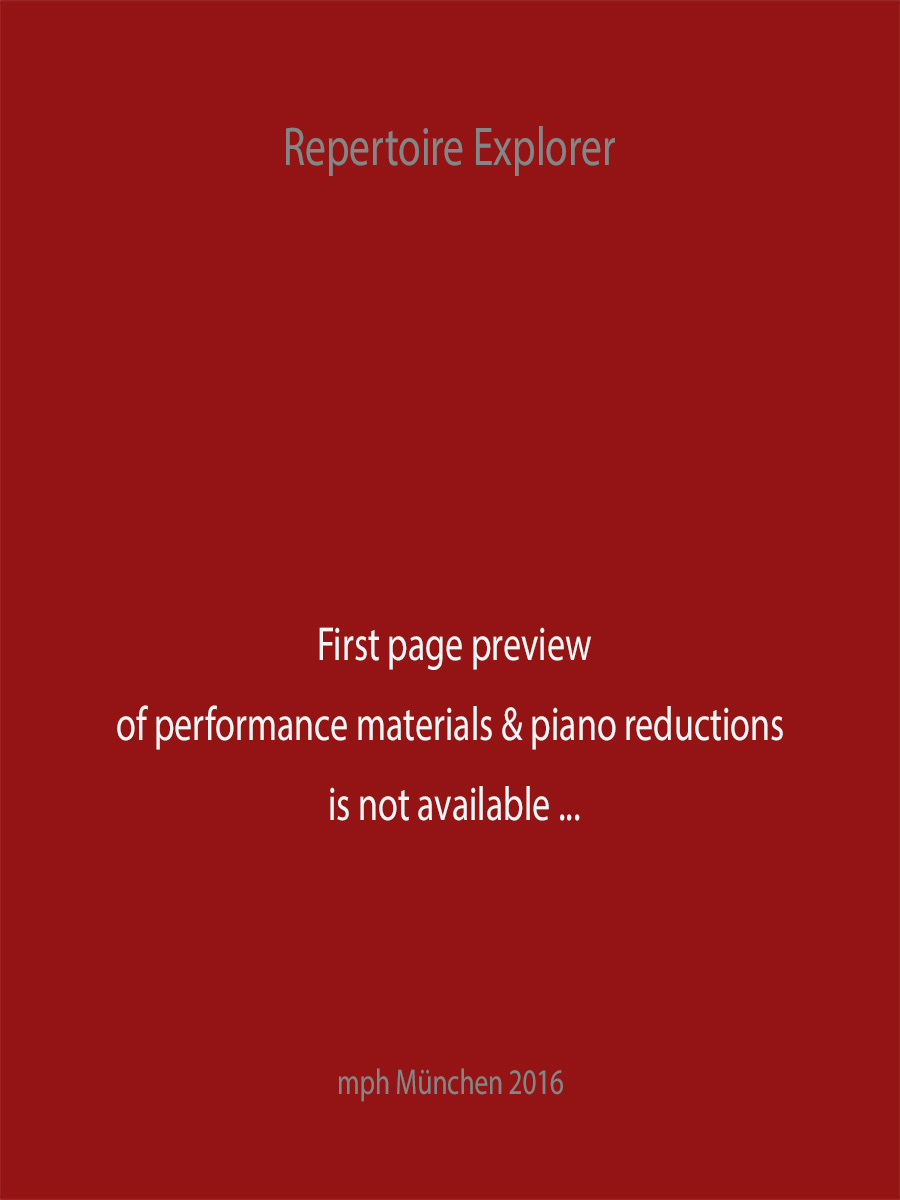Romance for Viola & Orchestra in F Op. 85 (Piano reduction / Solo Violin)
Bruch, Max
16,00 €
Preface
Bruch, Max – Romance for Viola & Orchestra in F Op. 85 (Piano reduction / Solo Violin)
(b. 6 Jan 1838, Cologne; d. 2 Oct 1920, Berlin)
Preface to full score / Vorwort der Partitur:
Romance for Viola and Orchestra in F Major, op. 85
(1911)
Max Bruch was born to comfortable middle-class surroundings, his father chief of police in Cologne, his mother a singer. Precocious and home-schooled, he was able to develop his talents as both a painter and composer, writing music from age eleven. At fourteen, he won the coveted Frankfurt Mozart-Stiftung Prize, and parlayed this success into study with then well-known composers Ferdinand Hiller (1811-1885) and Carl Reinecke (1824-1910). His itinerant career included stints in Leipzig, Mannheim, Koblenz, Sondershausen, Liverpool and Breslau. It was in Berlin, though, where he eventually settled, living there from 1890 until his death thirty years later. In that city he taught composition at the Hochschule für Musik until 1911, and his students would include Ottorino Respighi (1879-1936) and Ralph Vaughan Williams (1872-1958). He was also an accomplished conductor, and this depth of experience in the orchestral and choral milieux bore fruit in his own works.
Despite the strong musical currents swirling around him in the waning decades of the nineteenth century and early years of the twentieth, which were embodied by the progressivism and symphonic maximalism of Richard Wagner (1813-1883), Gustav Mahler (1860-1911), and Richard Strauss (1864-1949), Bruch stayed true to his conservative (by comparison) musical ideals, eschewing such outside influences in favor of a decidedly tonal harmonic language and relative restraint in formal proportions. In this regard, he emulated his German forebears Felix Mendelssohn (1809-1847) and Robert Schumann (1810-1856) more than he strove to keep up with the times. For this, his music was well received in his day, earning him the respect of his contemporaries and fruitful relationships with publishers. Unfortunately, his conservatism would eventually consign the bulk of his healthy output to relative obscurity. To be sure, this fate befell numerous other German composers of the era, including Bruch’s own teachers.
If Bruch’s name is recognizable at all to general audiences today, it is predominantly for his immensely popular Violin Concerto No. 1 in g minor, op. 26 (1866, dating from his Koblenz and Sondershausen periods). Like Beethoven with his Septet (op. 20, 1799-1800) and Tchaikovsky with his 1812 Overture (op. 49, 1880), Bruch came to resent the work’s popularity—deserved though it was and still is—at the expense of his other compositions. In the category of concertante works alone he penned no fewer than ten for violin, four for cello, and a smattering of others. For the viola, largely neglected as a soloist during the long nineteenth century, Bruch furnished a trio of works featuring the instrument near the end of his life: the Eight Pieces for Clarinet, Viola and Piano, op. 83 (1909), the Concerto for Clarinet and Viola in e minor, op. 88 (1911), and the present Romance.
The composer’s aptitude for melodic writing and judicious orchestration are given testimonial in this Romance. The middle range of the viola is featured throughout, and were it not for the double-stops and brisk arpeggios employed throughout—which are more idiomatic to a stringed instrument, of course—the work resembles essentially a wordless aria for mezzo-soprano. Bruch dedicated the work to Maurice Vieux, principal violist of the Paris Opéra, though it was the composer’s long-time collaborator, violinist Willy Hess who premiered it on April 25, 1911 in Berlin. As a musically and technically accessible single movement, the Romance remains popular as a conservatory piece for violists, if (sadly) not a vehicle of virtuosity deemed worthy of frequent performances in the concert hall.
Casey A. Mullin, 2013
For performance material, please contact Schott, Mainz.
Score Data
| Edition | Repertoire Explorer |
|---|---|
| Genre | Solo Instrument(s) & Orchestra |
| Pages | 36 |
| Size | 225 x 320 mm |
| Printing | Reprint |
